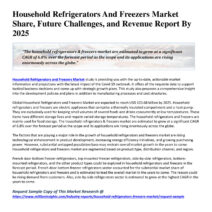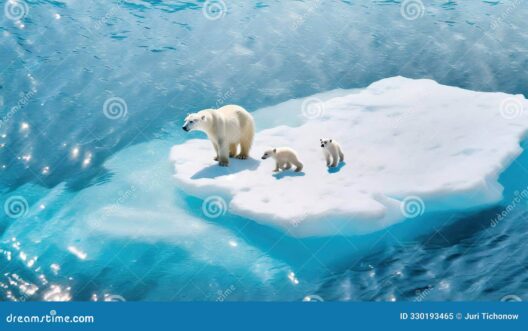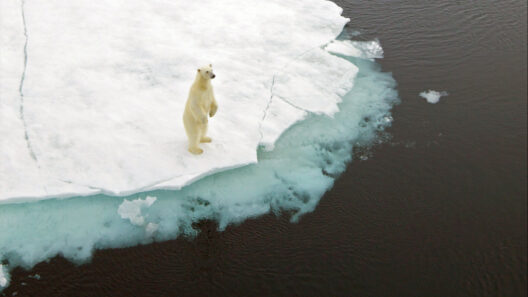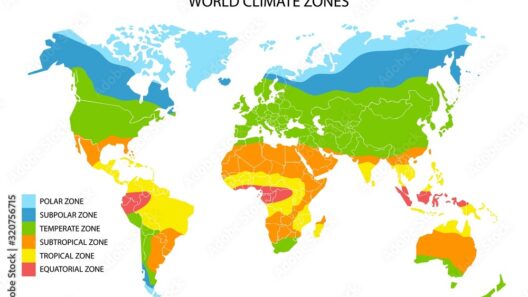The Rocky Mountains, a majestic range stretching over 3,000 miles from Canada to New Mexico, boast a diverse and complex climate that varies with altitude and geography. Understanding the climatic conditions of this iconic mountainous region is essential for appreciating its unique ecosystems and for recognizing the potential impacts of climate change on these fragile environments.
The climate within the Rocky Mountains is primarily characterized by its elevation, which precipitates significant variations in temperature, precipitation, and weather patterns. The lower elevations typically experience a continental climate, marked by hot summers and very cold winters, while the higher alpine regions encounter a subarctic or alpine climate, with markedly cooler temperatures year-round.
Elevation is a critical determinant of climate in the Rockies. As one ascends, temperatures decrease—generally by about 3.5°F for every 1,000 feet gained in altitude. For instance, a valley that may experience summer highs of 85°F may plunge to freezing temperatures at alpine heights during the same season. This differential promotes distinct ecological zones, from foothills and montane forests to subalpine and alpine ecosystems.
In valleys and lower slopes, the climate is more temperate. The montane zone typically sees moderate precipitation, composed mostly of rain during the growing season. However, as you transition into the subalpine region, the weather becomes increasingly unpredictable. This zone is characterized by cooler temperatures, heavier precipitation, and distinct snowfall patterns, contributing to the formation of glaciers and snowfields. The higher alpine regions encounter harsher weather conditions, often described as “miserable” due to colder temperatures and more intense storms, which can arise with little warning.
Generally, the Rockies manifest a bipolar weather pattern. Summers welcome an influx of moisture, fostering a growing season conducive to lush vegetation. However, thunderstorms can dominate the afternoon skies, leading to sudden downpours and even hail. This dynamic creates an environment where wildflowers bloom in abundance and wildlife flourishes, yet it demands caution from hikers and climbers who may find themselves caught in unpredictable conditions.
In contrast, winters in the Rocky Mountains are often severe. The northern segments of the range can accumulate significant snowfall, fostering a winter wonderland that is both enchanting and treacherous. The western slopes benefit from orographic lift, resulting in increased precipitation that nourishes forests with ample moisture during the spring melt. Meanwhile, eastern slopes may experience rain shadow effects, leading to drier conditions. This disparity between sides of the range illustrates the complex interplay between topography and atmospheric conditions.
Climate change is an undeniable factor impacting the Rockies’ climate. The average temperatures are rising, leading to diminishing snowpack and shifting ecosystems. As temperatures escalate, the blooming periods of various flora and fauna are occurring earlier in the year, potentially disrupting established ecological relationships. Moreover, decreased snowfall threatens water supplies for habitats and urban areas alike, as melting snow is a crucial resource for rivers and lakes.
Another consequence of climate change in this region is the risk of wildfires. Warmer temperatures and prolonged dry spells increase the likelihood of wildfires, which can ravage entire ecosystems. The summer of 2020, for instance, witnessed record temperatures and unprecedented wildfire activity across the western U.S., underscoring the pressing need for strategies to combat climate change and preserve the environment.
Despite these challenges, the Rocky Mountains offer unparalleled beauty and opportunities for outdoor enthusiasts. Hiking, skiing, and wildlife viewing allow visitors to experience the splendor of this remarkable region. However, understanding and respecting the climate’s nuances is essential for ensuring safe and sustainable enjoyment of the mountains.
Plans for conservation and awareness-raising are crucial. They should focus on the preservation of sensitive habitats and the native species that reside in them. Active engagement with local conservation groups can aid in educating both residents and visitors about the importance of stewardship and sustainable practices. Furthermore, climate action initiatives can be pivotal in mitigating the effects of climate change, with a concerted effort required from all sectors of society.
In conclusion, the climate of the Rocky Mountains is a mosaic of microclimates, underpinned by the interplay of elevation, geography, and weather patterns. The variability of conditions creates a unique environment rich in biodiversity but fraught with challenges, particularly in the context of climate change. A profound appreciation for the complexities of the Rocky climate can inspire a collective responsibility among individuals and communities to protect these awe-inspiring landscapes for future generations.







